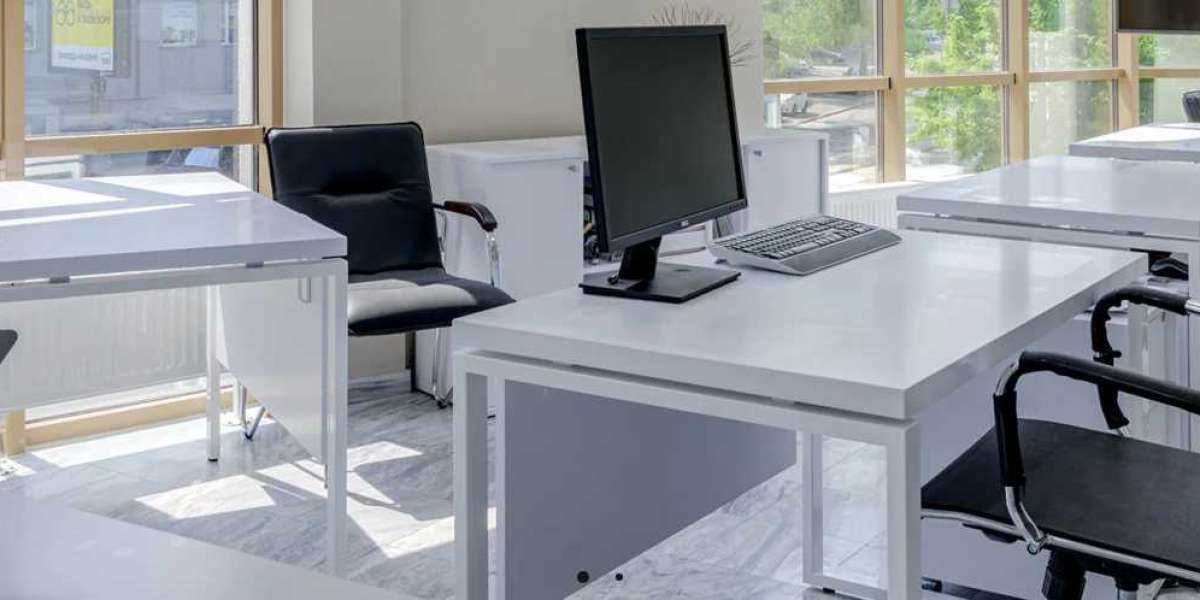Biophilic design emphasizes the connection between people and nature, integrating natural elements into the built environment to improve well-being and productivity. Incorporating biophilic principles into office furniture can create a healthier, more engaging workspace. Here’s how to integrate biophilic design into office furniture:
1. Natural Materials
- Wood: Use natural wood or wood veneers in furniture to bring a warm, organic feel to the workspace. Wood’s texture and color can evoke a sense of nature and comfort.
- Stone and Metal: Incorporate natural stone or metal elements for a modern touch that still connects with natural materials. These materials add durability and visual interest to office furniture.
2. Greenery and Plants
- Integrated Planters: Design furniture with built-in planters or green walls that integrate living plants into the workspace. Planters can be incorporated into desks, dividers, or shelves to bring a touch of nature indoors.
- Potted Plants: Provide space for potted plants on desks and workstations. Include plant stands or shelves that allow employees to personalize their work areas with greenery.
3. Natural Light
- Light-Reflecting Surfaces: Use materials and finishes that reflect natural light, such as light-colored woods or gloss finishes. This helps to enhance the illumination of the workspace and mimic natural daylight.
- Adjustable Lighting: Incorporate adjustable lighting options that mimic natural light patterns. Use lighting with varying intensities and colors to create a more dynamic and natural lighting environment.
4. Nature-Inspired Colors and Patterns
- Earthy Tones: Choose color palettes inspired by nature, such as greens, blues, and earthy browns. These colors can create a calming and restorative atmosphere.
- Organic Patterns: Integrate patterns and textures that mimic natural forms, such as leaf motifs, wood grain, or stone textures. These designs can enhance the natural aesthetic of the office furniture.
5. Ergonomic and Biophilic Design
- Nature-Inspired Shapes: Use furniture designs that incorporate natural forms and shapes, such as rounded edges or organic curves. These elements can make the furniture feel more harmonious with the natural world.
- Comfort and Support: Prioritize ergonomic designs that support physical well-being. Furniture that promotes good posture and reduces strain aligns with the biophilic principle of creating a comfortable, health-promoting environment.
6. Acoustic Comfort
- Sound Absorption: Incorporate materials and designs that help manage sound, such as acoustic panels or furniture with sound-absorbing properties. This can create a quieter, more serene workspace that mimics natural soundscapes.
- Nature-Inspired Sounds: Integrate subtle soundscapes, such as gentle water features or nature sounds, into the office environment. This can enhance the biophilic experience and contribute to a more relaxing atmosphere.
7. Outdoor Connections
- Views and Access: Design workspaces to maximize views of the outdoors. If possible, position desks and seating areas near windows or create visual connections with outdoor spaces.
- Outdoor-Inspired Furniture: Use furniture that evokes an outdoor feel, such as patio-style chairs or furniture with natural textures, to bring a sense of the outdoors inside.
8. Interactive Elements
- Nature-Inspired Interactive Features: Incorporate interactive elements that engage employees with nature, such as living plant installations or interactive nature-themed art.
- Educational Aspects: Include educational elements about the benefits of biophilic design and how employees can enhance their workspace with natural elements.
9. Biophilic Furniture Innovations
- Living Walls: Install living walls or green panels as part of the office furniture. These vertical gardens can improve air quality and provide a dynamic, nature-inspired focal point.
- Natural Air Filtration: Integrate air-purifying plants or systems within furniture pieces to enhance indoor air quality and create a healthier environment.
10. Flexibility and Adaptability
- Modular Designs: Use modular furniture that allows for easy rearrangement and adaptation of natural elements. This flexibility supports various work styles and allows for periodic updates to the biophilic elements.
- Personalization: Provide options for employees to personalize their workspace with biophilic elements, such as selecting their own plants or adjusting natural light levels.
Conclusion
Incorporating biophilic design into office furniture enhances the connection between people and nature, contributing to a healthier and more productive workspace. By integrating natural materials, greenery, nature-inspired colors and patterns, and ergonomic features, businesses can create an environment that promotes well-being and fosters a positive work atmosphere. Embracing biophilic design principles helps to create a workspace that not only supports physical health but also nurtures mental and emotional well-being.
https://www.reddestin.pk/








